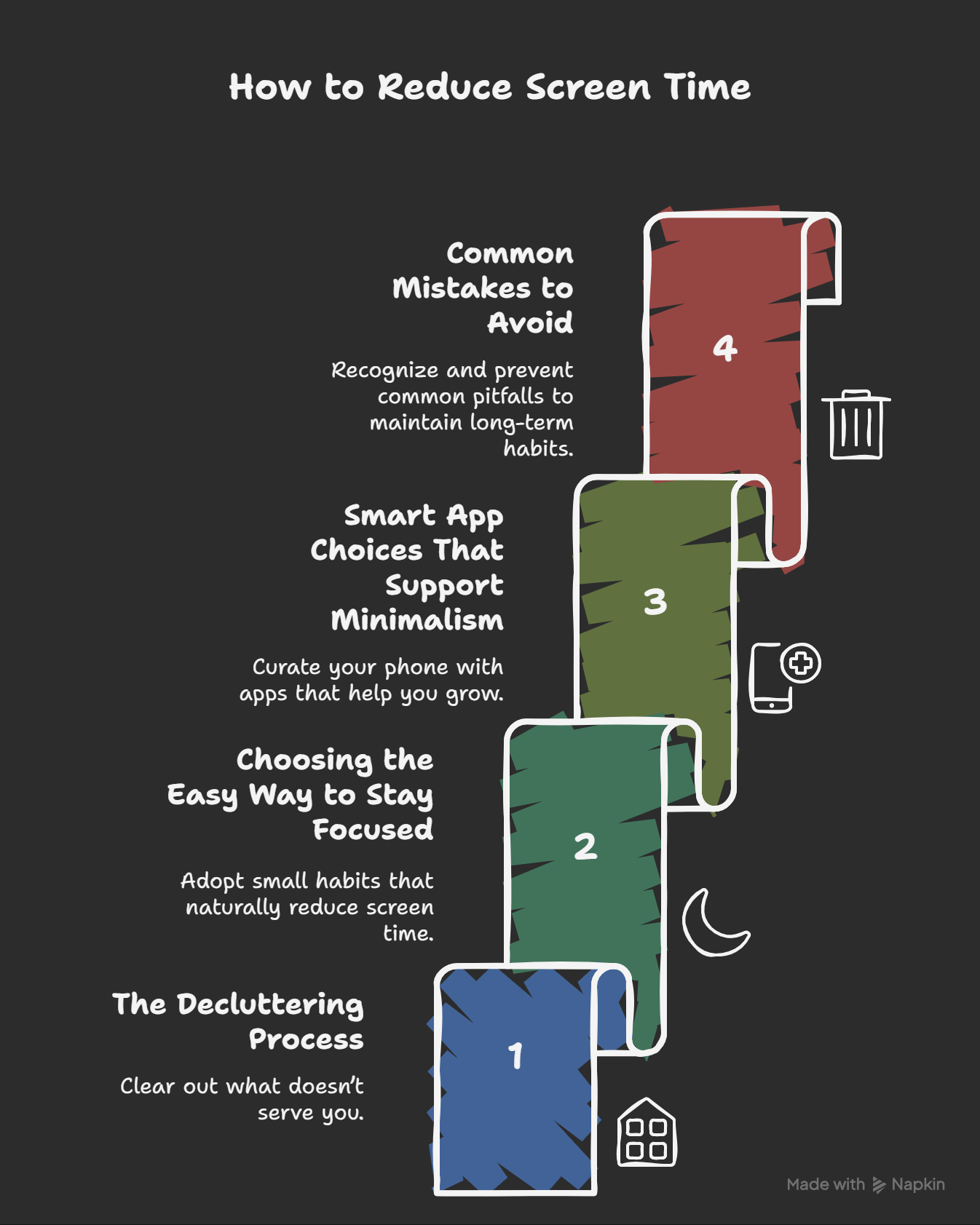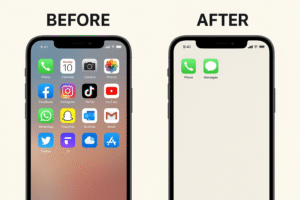Introduction
Do you ever catch yourself reaching for your phone without even thinking? You open one app, then another, and suddenly an hour is gone. You’re not alone—most of us struggle with endless notifications, crowded screens, and the pull of social media. The good news? A minimalist mindset can help. Through digital decluttering, you can simplify your phone, reduce app usage, and create space for what really matters.
The Core Principles of a Minimalist Mobile Life
Minimalism isn’t about living with nothing; it’s about making room for what’s essential. When applied to your phone, the minimalist approach helps you:
Remove digital clutter that steals your focus.
Organize apps in a way that supports your goals.
Use technology intentionally, not automatically.
This isn’t about being perfect or deleting every app. It’s about building a calmer, distraction-free relationship with your phone.
Step 1: The Decluttering Process (How to Start)
Digital decluttering begins the same way as cleaning a messy room—by removing what doesn’t serve you.
Audit your apps. Look at every app on your phone. Which ones do you truly need? Which ones just waste time?
Delete distractions. Remove games, social apps, or shopping platforms that eat up hours without adding value.
Hide the rest. Move non-essential apps to folders on the second or third screen so they’re harder to reach.
Simplify your home screen. Keep only the essentials—calls, messages, calendar, notes—front and center.
Pro tip: Use a neutral wallpaper. A simple background keeps your screen calm instead of busy.
Step 2: Choosing an Easy Way to Stay Focused
Decluttering once is powerful, but creating systems helps you stay consistent. Here’s how:
Use Focus Mode phone settings to block notifications during work hours.
Set daily app limits to stop endless scrolling.
Schedule downtime—no non-essential apps after 9 PM, for example.
Keep your phone out of reach while working, eating, or sleeping.
These little changes create friction between you and distractions, making it easier to stay focused.
Step 3: Smart App Choices for Productivity and Peace
Minimalism isn’t about deleting everything—it’s about choosing wisely. Here are smart swaps:
Replace mindless apps with mindful ones:
• Social media → reading app or Kindle
• Gaming → meditation or journaling app
• Shopping → finance trackerUse tools that encourage focus:
• Note-taking apps for quick ideas
• Podcast or audiobook apps for learning
• Calendar and reminders for intentional planning
By being selective, you turn your phone into a tool that supports your goals instead of stealing your time.

Common Mistakes to Avoid
Even with the best intentions, some habits can derail your progress:
Decluttering once, then downloading everything back later.
Keeping notifications on “just in case.”
Believing you need the latest productivity app to stay organized.
Trying to go too extreme and deleting every app you enjoy.
Minimalism works best when it’s sustainable. Keep what adds value, and let go of the rest.

Conclusion
Digital decluttering isn’t about living without technology—it’s about using it intentionally. By simplifying your phone screen, reducing app usage, and making smart choices, you create space for focus, calm, and real-life connection. Start small today: delete one distracting app, turn on Focus Mode, or reorganize your home screen. The change may feel simple, but it’s powerful.
Your phone should work for you, not against you. Take the first step toward a minimalist digital life—your mind (and your time) will thank you.
